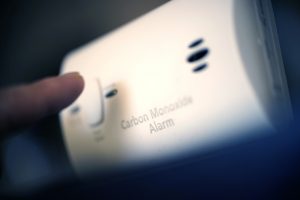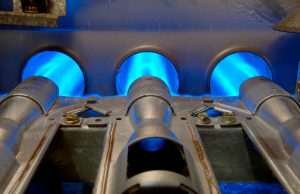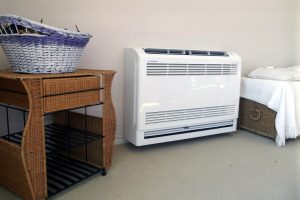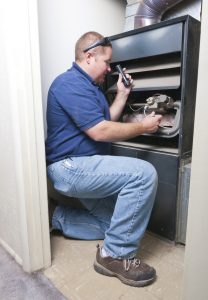 Finding the optimal temperature for a home is a lot like finding a leprechaun. Sure, you’ve probably heard that it exists, but no matter what you do or how hard you look it seems like you just can’t find it. It seems like every single person has different advice to tell you about their home temperature. Some people “never turn the thermostat lower than 68” while others “never turn it higher than 60.” Isn’t it frustrating?
Finding the optimal temperature for a home is a lot like finding a leprechaun. Sure, you’ve probably heard that it exists, but no matter what you do or how hard you look it seems like you just can’t find it. It seems like every single person has different advice to tell you about their home temperature. Some people “never turn the thermostat lower than 68” while others “never turn it higher than 60.” Isn’t it frustrating?
Today, we’re going to talk about the “optimal temperature of a home.” Did you know that the energy.gov website actually lists a specific range of temperatures that are the most efficient for a heating system? It’s true! Let’s talk about the objective, factually optimal temperature for your heating in Boerne, TX to run at.
Remember, it needs to meet your comfort preferences and your budget requirements! Let’s meet in the middle and find the best home temperature for you.

 Most of our customers know one big detail about carbon monoxide–that it’s poisonous. As long as you know that carbon monoxide is bad and should never be allowed to exist in your home, then you’re probably fine to continue with life as usual. However, for our more curious customers that want a bit more information as to why carbon monoxide is poisonous, then you’re in the right place.
Most of our customers know one big detail about carbon monoxide–that it’s poisonous. As long as you know that carbon monoxide is bad and should never be allowed to exist in your home, then you’re probably fine to continue with life as usual. However, for our more curious customers that want a bit more information as to why carbon monoxide is poisonous, then you’re in the right place. When your old heater was installed, was it sized correctly? Did a professional perform a load calculation? If you don’t know what load calculation is, it’s okay. We don’t expect homeowners to be so familiar with HVAC services that they’d understand the complicated math behind these kinds of things. Basically, when a heater is being set up in a home, it needs to accurately be sized according to how much air exists inside the house. The larger the home, the more volume of air the heater needs to be able to heat. It’s that simple!
When your old heater was installed, was it sized correctly? Did a professional perform a load calculation? If you don’t know what load calculation is, it’s okay. We don’t expect homeowners to be so familiar with HVAC services that they’d understand the complicated math behind these kinds of things. Basically, when a heater is being set up in a home, it needs to accurately be sized according to how much air exists inside the house. The larger the home, the more volume of air the heater needs to be able to heat. It’s that simple! Heater warranties are worth their weight in gold these days. We’re not kidding, they can be worth thousands of dollars whenever you run into an issue, and they are the object of envy for any homeowner that doesn’t have one. Think about it—what’s better than a service like a manufacturer’s warranty that will pay for any repairs or services within a specific time-frame?
Heater warranties are worth their weight in gold these days. We’re not kidding, they can be worth thousands of dollars whenever you run into an issue, and they are the object of envy for any homeowner that doesn’t have one. Think about it—what’s better than a service like a manufacturer’s warranty that will pay for any repairs or services within a specific time-frame? If you don’t know what carbon monoxide is, we recommend doing a few internet searches after reading this blog post. While we hope that everyone knows what it is, it’s particularly important that homeowners and gas furnace owners, in particular, know about carbon monoxide, since it can be a threat when a heating system has been neglected.
If you don’t know what carbon monoxide is, we recommend doing a few internet searches after reading this blog post. While we hope that everyone knows what it is, it’s particularly important that homeowners and gas furnace owners, in particular, know about carbon monoxide, since it can be a threat when a heating system has been neglected. We’ve officially entered the last few weeks of winter, which means we’ll soon be turning off our heating systems and turning on our air conditioners. We strongly recommend scheduling a maintenance session for your heating system sometime soon. The warming weather means you won’t have use of the system for much longer, but you have likely been running your heater quite often in the last few months. That can build up a huge amount of wear and tear, which will eventually lead to a serious breakdown if you’re not careful. A maintenance session is just what the doctor ordered.
We’ve officially entered the last few weeks of winter, which means we’ll soon be turning off our heating systems and turning on our air conditioners. We strongly recommend scheduling a maintenance session for your heating system sometime soon. The warming weather means you won’t have use of the system for much longer, but you have likely been running your heater quite often in the last few months. That can build up a huge amount of wear and tear, which will eventually lead to a serious breakdown if you’re not careful. A maintenance session is just what the doctor ordered.  Most homes in the area rely on centralized heating of some kind or another, which heats the air in a single location and then distributes it through the home with a system of ducts. It’s inexpensive and effective, which makes it a great option for most homes. Some homes, however, can’t support the ducts required, either because their architecture is unique in some way, or simply because they were built before air conditioning was available and thus can’t support a system of ducts.
Most homes in the area rely on centralized heating of some kind or another, which heats the air in a single location and then distributes it through the home with a system of ducts. It’s inexpensive and effective, which makes it a great option for most homes. Some homes, however, can’t support the ducts required, either because their architecture is unique in some way, or simply because they were built before air conditioning was available and thus can’t support a system of ducts.  Heating season has officially arrived, and that means you’ll be running your furnace or your boiler on a regular basis between now and spring. If your system runs into problems, you’re going to want to spot it sooner rather than later. Spotting an issue now and getting it addressed with a repair session from a trained technician can save you money and effort, especially when compared to getting caught flat-footed with a breakdown in the middle of the coldest day of winter.
Heating season has officially arrived, and that means you’ll be running your furnace or your boiler on a regular basis between now and spring. If your system runs into problems, you’re going to want to spot it sooner rather than later. Spotting an issue now and getting it addressed with a repair session from a trained technician can save you money and effort, especially when compared to getting caught flat-footed with a breakdown in the middle of the coldest day of winter. 













